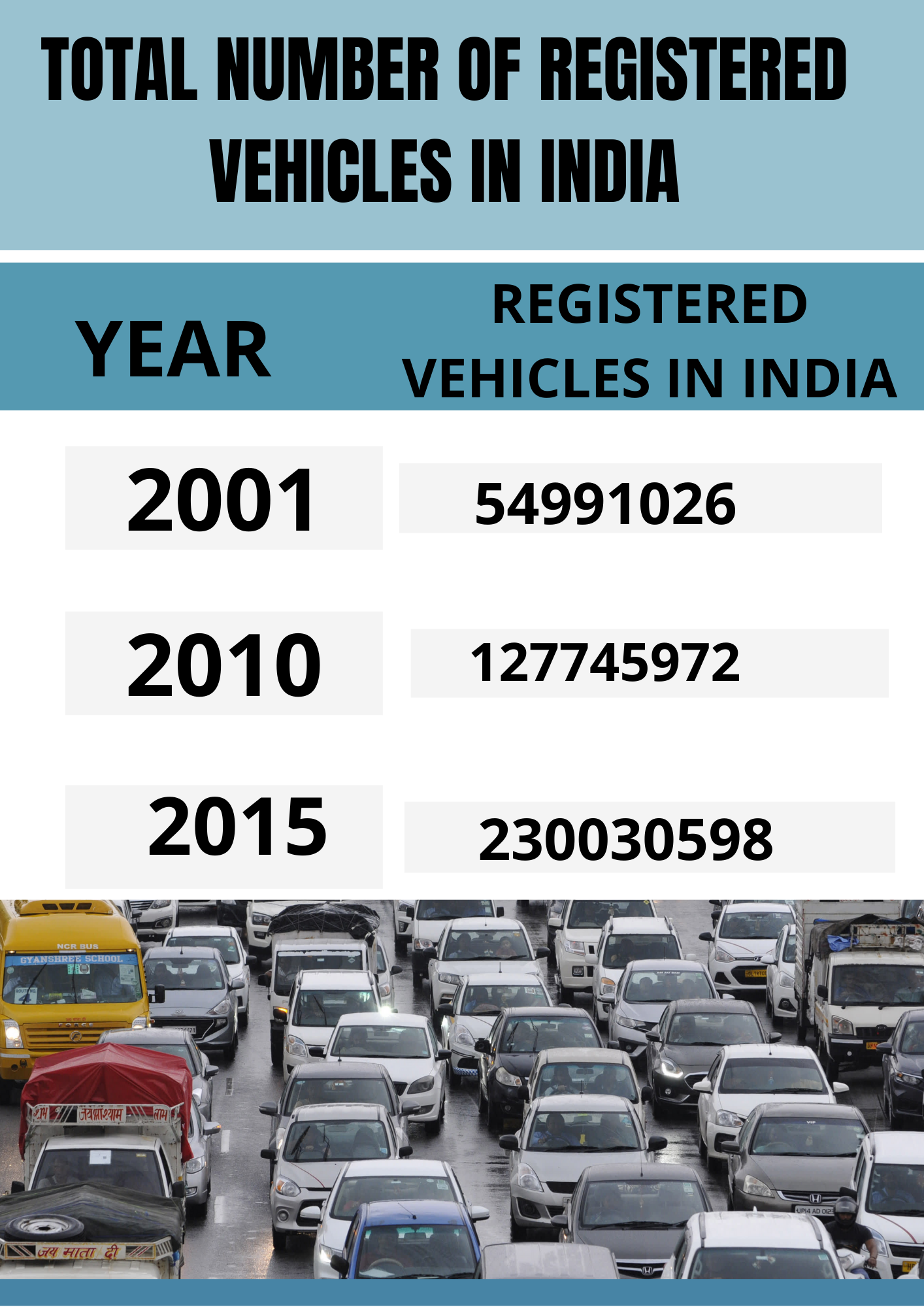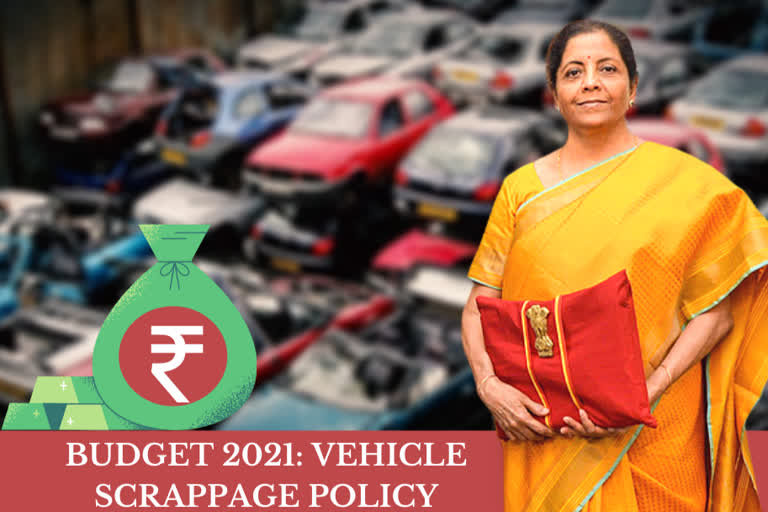Hyderabad: Finance Minister Nirmala Sitharaman announced a voluntary vehicle scrapping policy in Union Budget 2021 where vehicles will undergo the fit test. The scrappage policy could take old vehicles off roads which could, in turn, result in lower emissions, better fuel efficiency and a boost to the automobile manufacturing sector owing to an increase in demand.
Vehicle scrappage as a policy has been active in several countries and its multi-faceted benefits have been repeatedly highlighted. It is a policy that the Indian automobile industry has also been eyeing for some time now. In fact, several industry leaders had the time and again urged the government to move forward with this.
According to GlobalData, there were approximately 2.34 million passenger vehicles in India with the age of 15 years and above in 2019.
Approved Vehicle scrappage policy for Government Vehicles in India Voluntary Vehicle Scrapping Policy
Voluntary Vehicle Scrapping Policy

The Ministry of Road Transport and Highways (MoRTH) on 25th January 2021 approved the vehicle scrappage policy for vehicles owned by the government and PSU which are older than 15 years.
This policy would apply to central and state government-owned vehicles effective from April 1, 2022. Last year, Union Minister, Nitin Gadkari, had said that the vehicle scrappage policy was one of the government's priorities that is inclined towards curbing pollution. The proposed policy is aimed to create more demand in the automobile industry, which has been majorly affected by the pandemic.
Comparison of Scrappage Program Worldwide
Country | Incentive to Public | Cost to Government | Age of Vehicles | Conditions for New Cars | Change in Registrations |
| USA | 4500 dollars | 3 billion dollars | More than 8 years | Fuel efficiency equalling 247g/km maximum CO2 emissions | na |
| UK | 2000 Pounds | 500 million dollars | More than 9 years | None | -15.50% |
| Germany | 3552 Dollars | 7.1 Billion Dollars | More than 9 years | None | 26.10% |
| France | 1421 Dollars | 554 Million | More than 10 years | 160g/km maximum CO2 emissions | 2.40% |
| Spain | 2000 Euros | 400 Million Euros | More than 10 years | 149g/km maximum CO2 emissions | -28.60% |
- Demand for USED CARS in India
The average life of a vehicle is envisaged to be 10-15 years, and the increase in vehicular population has also led to an increase in the number of obsolete vehicles [also called end-of-life vehicles (ELVs)].
ELVs which are not in working condition are dumped on roadsides or open plots and they block those spaces. ELVs which are in working condition find buyers (as ‘used’ cars) despite being more polluting and less fuel-efficient than their newer counterparts.
According to Deloitte Research, the used car market in India is about 1.3 times the new car market and it is growing at about 17 to 18 % every year.
According to an estimate of the Central Pollution Control Board (CPCB), there were 8.7 million obsolete vehicles, in 2015, and it is estimated that they will further increase to 22 million by 2025.
- Pandemic Impact in Automobile sector in India
Passenger vehicle sales in India, the barometer of the automobile industry's performance, plunged 78.43 per cent in the April-June period this year hit by the pandemic, declining for the ninth straight quarter and making it the longest slowdown in 20 years.
It is estimated that during the prolonged lockdown, the auto industry suffered losses of more than Rs 2,300 crore in turnover for every single day of closure.
- Electric Vehicles Sales in India
For years, the government has been trying to make electric vehicles as mainstream as petrol and diesel vehicles, with little success.
In 2015, it launched a Faster Adoption and Manufacturing of Hybrid and the EV(FAME) plan, with a Rs 9 billion ($123 million) commitment to subsidies that covered everything from electric tricycles to buses, and followed it up with a Rs 100 billion plan in 2019 to encourage EV purchases and build out charging infrastructure. It also cut the Goods and Services Tax on EVs from 12 per cent to 5 per cent effective August 2019.
Despite the measures, the rate of EV adoption has remained abysmally low, with just 3,400 electric cars and 1.52 lakh electric two-wheelers selling in India in 2019-20. Presently, EVs account for less than 1 per cent of sales in India.
- Merits of Vehicle Scrapping Policy
This vehicle scrappage policy may lead to an increase the Electric vehicles sales in India and as well as plays a major role in curbing the population. It will generate new job opportunities in the organised automobile sector creating a skilled workforce in the industry.
In addition to a new business line, recycling of the ELVs offers a big opportunity for producing recycled metal like steel, aluminium, and copper, etc. which will, in turn, reduce their cost of raw material as they shall be procured in-house instead of importing them.
This opportunity may also become bigger because the Government is also considering the development of a global scrappage hub at Alang, Gujarat which will increase the scale of operations and availability of metals manifold.



